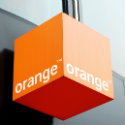
LONDON -- 5G World -- Having so far based its low-power, wide-area (LPWA) network strategy around the technologies of LoRa and LTE-M, Orange is now planning to add NB-IoT to the mix in a move that will raise fresh questions about its long-term commitment to other systems. (See LoRa May Not Be for Long Haul at Orange.)
The French telco has until now had little to say about NB-IoT, even suggesting that it chose LTE-M as a licensed-spectrum alternative, but that now looks set to change.
"We are not against NB-IoT and in markets with Chinese infrastructure we also plan to roll out NB-IoT as a complement to the others," said Orange's Jean-Pierre Casara during a panel discussion at this week's 5G World conference in London. "Obviously NB-IoT doesn't make sense in France because LoRa covers half of the use cases but it does in other markets."
The remarks shed light on Orange's thinking about LPWA technologies, which are designed mainly to support machine-based devices like smart meters that require small amounts of bandwidth but long battery life.
Orange (NYSE: FTE) embarked on a LoRa strategy a couple of years ago largely because a 3GPP alternative was then unavailable. That LoRa network has now taken root in France and is evidently addressing the same kind of opportunities that NB-IoT could elsewhere.
So while LoRa and LTE-M are used in France, NB-IoT could in certain situations become a complement to LTE-M -- to which Orange has made a strong commitment -- in countries like Belgium and Spain, where Orange is already rolling out LTE-M services.
It seems like bad news for LoRa, one of several proprietary technologies that rely on unlicensed spectrum to provide services, even if the move is not altogether surprising.
Telcos, of course, have traditionally worked within the parameters set by the 3GPP and would prefer to use technologies that form a part of the LTE standard provided the economics make sense.
At the moment, NB-IoT equipment appears to be more expensive than kit supporting LoRa and Sigfox, another unlicensed-spectrum technology. But Steve Bell, a strategy, marketing and technology analyst and advisor at Heavy Reading, sees growing momentum behind NB-IoT and believes that interest in the vast Chinese market could help to lower the price of modules and spur adoption. (See NB-IoT? Not at Those Prices, Say DT Customers.)
Want to know more about the Internet of Things? Check out our dedicated IoT content channel here on Light Reading.
Casara's comments about using NB-IoT only where there is "Chinese infrastructure" are also interesting in light of the interoperability problems that seem to have plagued the standard.
As previously reported by Light Reading, various sources have indicated that network equipment from China's Huawei Technologies Co. Ltd. is incompatible with that from Sweden's Ericsson AB (Nasdaq: ERIC), and that despite standardization efforts there are effectively two versions of the technology in the market. (See Ericsson, Huawei incompatibility threatens NB-IoT – sources.)
The vendors have pleaded ignorance but Vodafone, one of the biggest supporters of NB-IoT, recently said it had been carrying out interoperability tests weeks after it was supposed to have launched a commercial service in some European markets. (See NB-IoT Gets Insecurity Complex.)
While it missed its initial targets for launching the technology, Vodafone Group plc (NYSE: VOD) said in its recent update that all of its interoperability tests had gone smoothly. (See Vodafone to Miss NB-IoT Launch Targets.)
Nevertheless, Nick Hunn, the chief technology officer at a small advisory firm called WiFore Consulting, believes the interoperability problem is particularly irksome for module makers such as Telit and u-blox, and forcing those companies to update firmware on a regular basis.
Telit declined to comment on the matter when approached by Light Reading.
Analysts believe the interoperability problems will eventually be addressed and that NB-IoT will subsequently become one of the most widely used LPWA technologies in the global market.
Whether LoRa and Sigfox can last the distance depends on how much progress they can make while NB-IoT is still experiencing growing pains.
— Iain Morris, 

 , News Editor, Light Reading
, News Editor, Light Reading
Read more about:
EuropeAbout the Author(s)
You May Also Like











